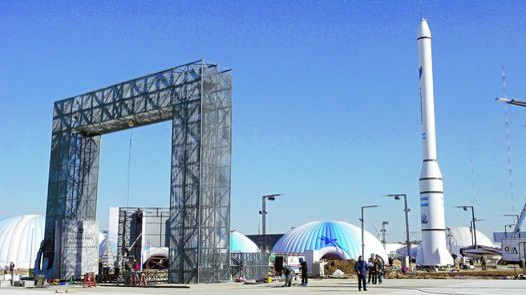Argentina To Put First Satellite In Space Using Own Launch Technology By 2015

Between high inflation and political drama, Argentina has not had its best year. But the Latin American country is still reaching for the stars. Quite literally: Next year it plans to put its first satellite in space, using its own technology, from Argentine soil. That's something that its rival and South America's biggest economy, Brazil, can't claim yet. While an international aerospace powerhouse, Brazil does not launch its own satellites, relying on rockets owned by other countries.
The first experimental rocket from the Tronador II project will be tested before the end of November, according to Argentina's Comisión Nacional de Actividades Espaciales (National Space Activities Commission, or CONAE). The launch has been ready for months, but success is dependent on climate and atmospheric conditions, which made the agency wait until the austral spring, said Executive Director Conrado Varotto.
“Sooner or later, this dream will come true,” he told the newspaper El Tiempo.
The Argentine government invested 55 million pesos ($9 million) in the construction of prototypes Vex1a and Vex1b, both the size of five-story buildings. Calculations estimate the rockets will need to be propelled at 828 kilometers per hour (514 miles per hour) to reach 3,000 meters (9,000 feet) before descending, all in 30 seconds.
The authorities admit they are not expecting this test to go well. “The most likely scenario is that they explode,” said Varotto. “The success probability is less than 10 percent."
Argentina plans three to six tests to perfect the rocket and join the space race. According to CONAE, only 10 other countries have the same technology. Argentina will then join the U.S., Russia, China, France, Japan, India, the UK, Israel, Iran and North Korea as one of the few countries capable of launching satellites from within their borders.
Although tests are being carried out in Punta Indio, in the province of Buenos Aires, once the test is successful the space agency will move the project to the more isolated Puerto Belgrano, around 700 kilometers (430 miles) south of the capital.
The project is being carried out by CONAE and the Universidad Nacional de La Plata, and in total is expected to require an investment of 2 billion pesos ($334 million) in the next three years. The satellites will bring information valuable for farming, fishing, emergency management and land planning.
The first Tronador II rocket is expected to launch and put its first satellite in orbit by September 2015.
© Copyright IBTimes 2024. All rights reserved.











